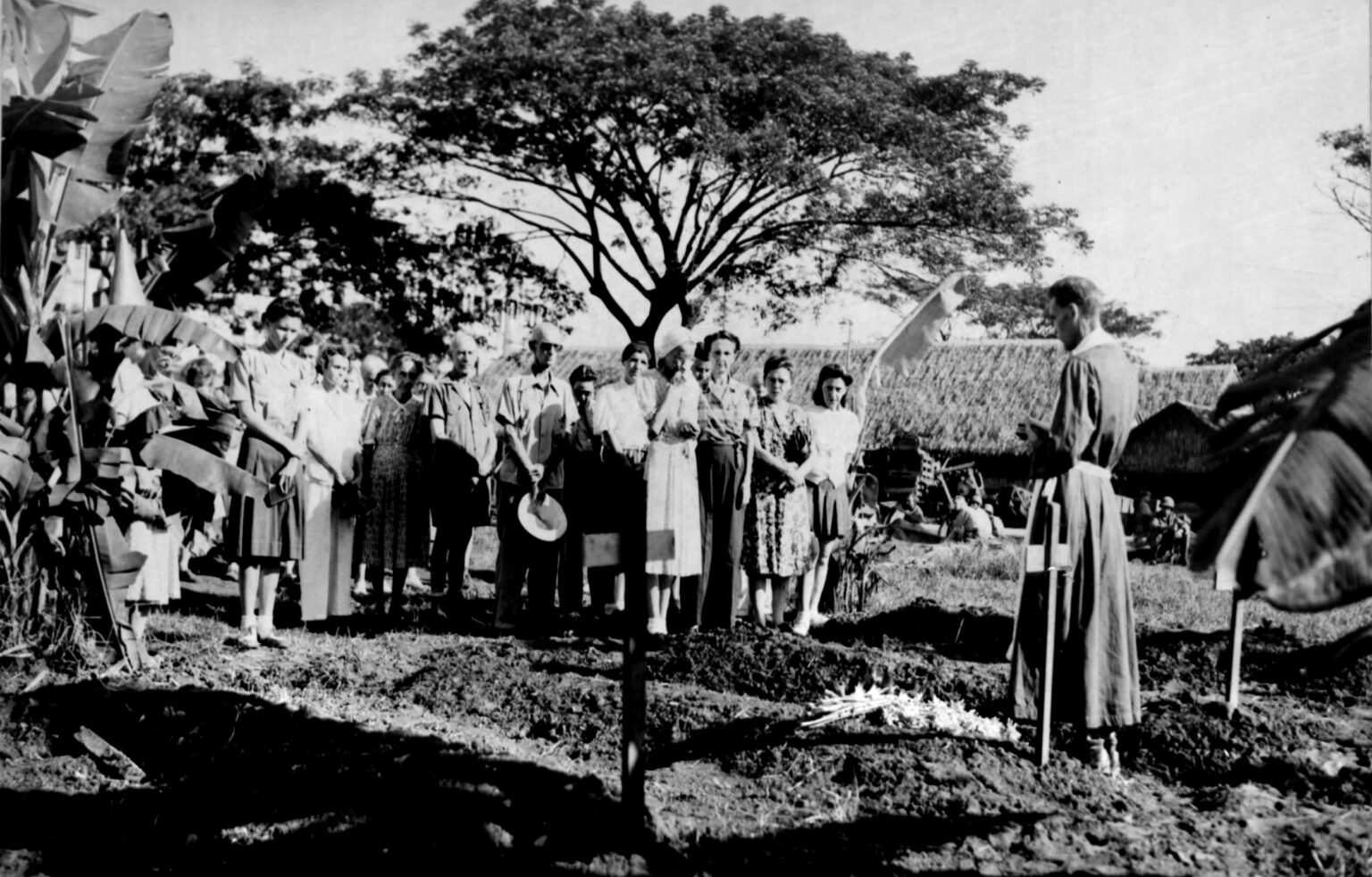How 4 expats ended up in a ditch in WWII Manila

Ruth Grinnell received a citation honoring her late husband, Carroll C. Grinnell, when he was posthumously awarded the Medal of Freedom. Carroll's leadership among the internees at Santo Tomas from 1942 to 1945 was lauded for his tireless efforts in securing funds for essential provisions like food, clothing, medicines, and hospital supplies.
Carroll, alongside fellow camp officers Alfred Francis Duggleby, Clifford Lawrence Larsen, and Ernest Emil Johnson, met a tragic fate at the hands of the Kempeitai around January 15, 1945, for reasons still cloaked in mystery.
Before World War II reached Philippine shores, Carroll held esteemed positions in various companies, showcasing his leadership abilities and dedication to service. When Manila fell under Japanese occupation, the University of Santo Tomas became an internment camp for foreign civilians, primarily Americans and British, who endured 37 months of captivity.
Within the confines of the camp's walls, the internees established a self-governing community, with Carroll at the helm of the internee committee. His unwavering commitment to his fellow captives left an indelible mark on those he served.
Even in the face of danger, Carroll's dedication to easing the internees' suffering remained steadfast. Personal accounts, such as that of U.S. Army nurse Ethel “Sally” Blaine Millett, highlight his instrumental role in securing provisions and saving lives.
Accounts from former internees provide poignant glimpses into Carroll's character and the harrowing events leading to his demise. Despite the passage of time, memories of his selflessness and sacrifice endure, recounted in personal diaries and interviews.
In Neville Stopford’s recollection from a 2002 interview, he spoke briefly about the camp leaders, notably Grinnell, whose contributions, though somewhat obscured by the passage of time, were nonetheless acknowledged. Neville, born in 1932 in Manila to an American mother from San Antonio, Texas, and an English father, found himself initially interned in Baguio City's camp before reuniting with his family at Santo Tomas.
According to Stopford, Grinnell and his associates disappeared three days prior to the arrival of American forces. Their sudden absence was a perplexing occurrence, given their proximity to the Japanese and their pivotal roles in overseeing camp affairs.
"These men held a grave responsibility," Stopford remarked. "They had to walk a fine line, maintaining order without appearing too lenient."
He recalled their abrupt disappearance, never to be seen again, attributing it to the grim reality of their fate at the hands of the Japanese. "They were discovered, hands bound and beheaded—a tragic end for those who had worked tirelessly for us. What a sacrifice."
Additional accounts from fellow internees shed further light on Grinnell's character and the circumstances surrounding the imprisonment and ultimate demise of the four business executives. Albert Holland, chronicling events in his diary, noted the sudden arrest of Grinnell and another camp leader, suggesting suspicions about their attempts to communicate conditions within the camp.
Margaret Gillooly recalled the harrowing night when Grinnell and his companions were seized, taken from their beds one by one, only to be found later, their lives brutally ended.
Yet amidst the darkness of those times, there were glimmers of resilience and humanity. Gillooly recounted Carroll's efforts to alleviate food shortages, striking deals with vendors to accept his checks on behalf of General Electric, promising reimbursement once the war concluded—a promise that was indeed fulfilled.
Even U.S. Army nurse Ethel "Sally" Blaine Millett, in her own recollection, recounted the grim reality of the internees' fate, underscoring the tragic mistake in the identity of one of the victims.
Eleanor Garen, one of the internees whom Grinnell helped, expressed her gratitude post-liberation, her life saved by his timely intervention. And in a poignant gesture, she repaid the debt to General Electric upon her return to the States.
Carroll Grinnell Jr., in an interview with the Atlanta History Center, shed light on his father's clandestine efforts to provide for the internees, ultimately leading to his execution by the Japanese.
Declassified U.S. Army reports offered further insights, revealing the painstaking efforts to uncover the truth behind the internees' disappearance and subsequent discovery of their remains. Correspondences and investigations provided a clearer picture of the grim fate suffered by Grinnell and his companions.
 What happened
What happened
Following the liberation of the camp on February 3, 1945, efforts persisted in unraveling the mystery surrounding the disappearance of the four internees. A tip from a doctor suggested Grinnell might have been taken to the Philippine General Hospital (PGH). However, inquiries at PGH yielded no trace of the GE senior executive until a conversation with PGH director Dr. Antonio Sison pointed investigators to the residence of Dr. Baldomero Roxas in Malate, Manila.
Dr. Sison, who had been detained by the Japanese from December 21 to 31, 1944, recalled encountering Ernest Johnson during his captivity. Dr. Sison's account, coupled with the investigation led by the chief of police, prompted further scrutiny of the Roxas residence and its surroundings. Despite efforts, initial searches yielded no evidence of the internees.
However, persistence paid off. A subsequent search led to the discovery of Grinnell's body by Poole, distinctively dressed in khaki pants, a cream-colored Vayella shirt with his initials "CCG," and other identifiable items. The search also unearthed additional remains, including those believed to be Duggleby's and Johnson's, each bearing unique identifiers and attire.
A detailed examination, conducted by Dr. T. D. Stevenson on February 22, 1945, concluded that positive medical evidence of their identities could no longer be ascertained due to advanced decomposition. Nevertheless, efforts to honor the fallen continued, culminating in a proper burial on February 22, 1945, on the east corner of the Seminary Building at the University of Santo Tomas.
In a final act of reverence, the bodies were accorded a proper burial on February 22, 1945, marking the culmination of a painstaking journey to honor the fallen at the University of Santo Tomas.
